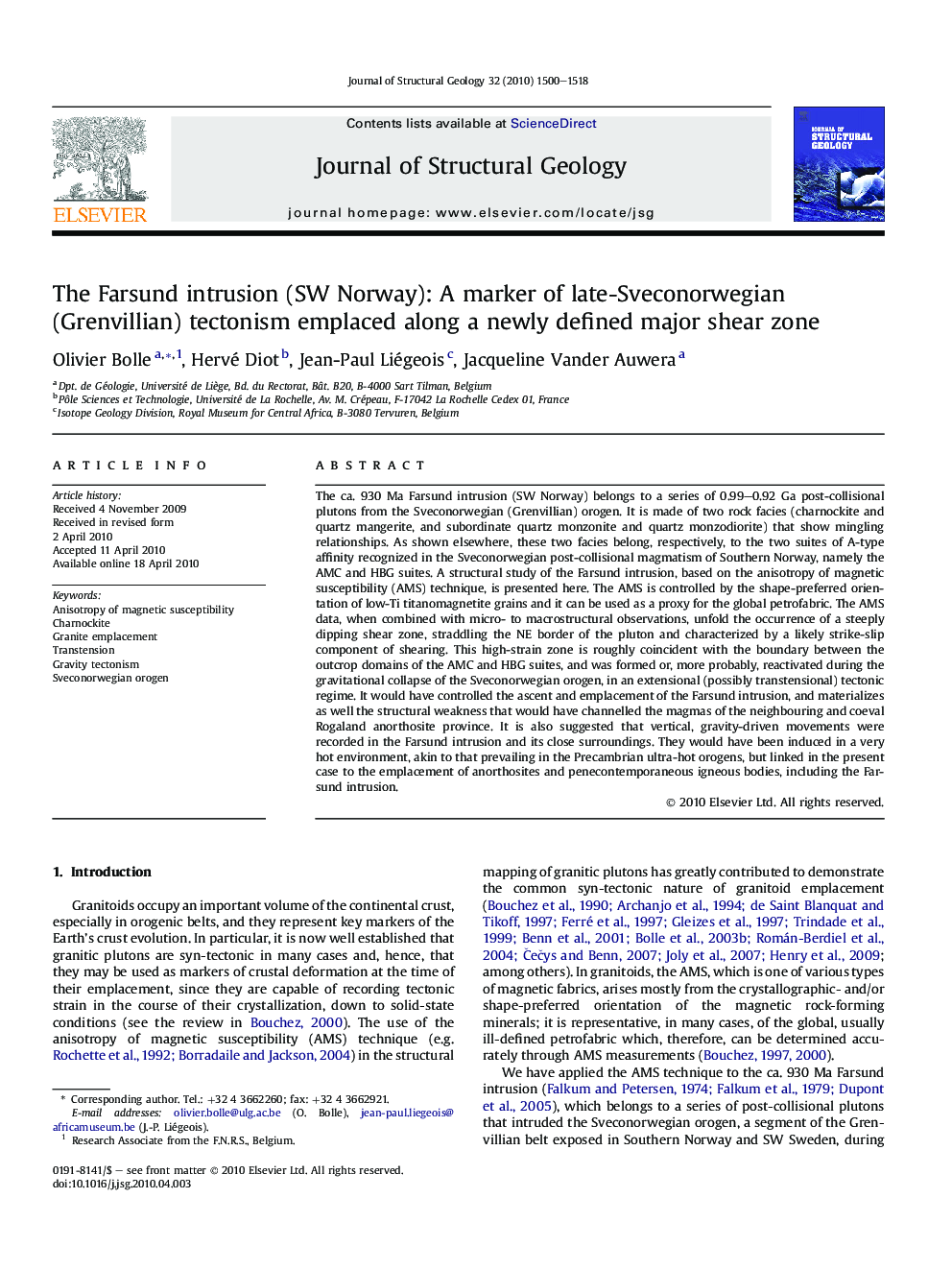| کد مقاله | کد نشریه | سال انتشار | مقاله انگلیسی | نسخه تمام متن |
|---|---|---|---|---|
| 4733503 | 1357029 | 2010 | 19 صفحه PDF | دانلود رایگان |

The ca. 930 Ma Farsund intrusion (SW Norway) belongs to a series of 0.99–0.92 Ga post-collisional plutons from the Sveconorwegian (Grenvillian) orogen. It is made of two rock facies (charnockite and quartz mangerite, and subordinate quartz monzonite and quartz monzodiorite) that show mingling relationships. As shown elsewhere, these two facies belong, respectively, to the two suites of A-type affinity recognized in the Sveconorwegian post-collisional magmatism of Southern Norway, namely the AMC and HBG suites. A structural study of the Farsund intrusion, based on the anisotropy of magnetic susceptibility (AMS) technique, is presented here. The AMS is controlled by the shape-preferred orientation of low-Ti titanomagnetite grains and it can be used as a proxy for the global petrofabric. The AMS data, when combined with micro- to macrostructural observations, unfold the occurrence of a steeply dipping shear zone, straddling the NE border of the pluton and characterized by a likely strike-slip component of shearing. This high-strain zone is roughly coincident with the boundary between the outcrop domains of the AMC and HBG suites, and was formed or, more probably, reactivated during the gravitational collapse of the Sveconorwegian orogen, in an extensional (possibly transtensional) tectonic regime. It would have controlled the ascent and emplacement of the Farsund intrusion, and materializes as well the structural weakness that would have channelled the magmas of the neighbouring and coeval Rogaland anorthosite province. It is also suggested that vertical, gravity-driven movements were recorded in the Farsund intrusion and its close surroundings. They would have been induced in a very hot environment, akin to that prevailing in the Precambrian ultra-hot orogens, but linked in the present case to the emplacement of anorthosites and penecontemporaneous igneous bodies, including the Farsund intrusion.
Journal: Journal of Structural Geology - Volume 32, Issue 10, October 2010, Pages 1500–1518